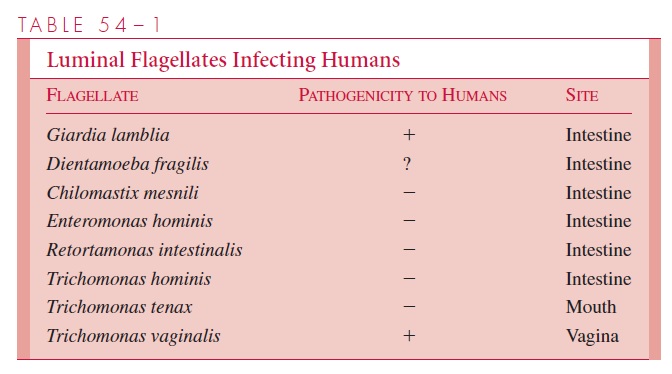Chapter: Medical Microbiology: An Introduction to Infectious Diseases: Flagellates
Noninvasive Luminal Flagellates
NONINVASIVE LUMINAL FLAGELLATES
Luminal flagellates can be found in the mouth, vagina, or intestine of almost all vertebrates, and it is common for an animal host to harbor more than one species. Humans may serve as host and reservoir to eight species (Table 54–1), but only two cause disease. Of these, Giardia lamblia inhabits the intestinal tract, and Trichomonas vaginalis inhabits the vagina and genital tract.

These organisms are elongated or oval in shape and typically measure 10 to 20ÎĽm in length. They often possess a rudimentary cytostome (mouth aperture) and organelles such as sucking discs or axostyles, which help them maintain their intraluminal position. They are readily recognized in body fluid or excreta by their rapid motility, and some can be specifically identified in unstained preparations. All can be cultivated on artificial media.
Some luminal flagellates, most notably T. vaginalis, possess only a trophozoite stage and are passed from host to host by direct physical contact. Most, including G. lamblia, possess both trophozoite and cyst forms. The latter, which is the infective form, is trans-mitted via the fecal – oral route. Human-to-human infection is thus found in populations where inadequate sanitation or poor personal hygiene favors spread.
Related Topics